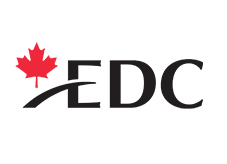Paid advertising as a marketing channel
Jyll Saskin Gales from Google Canada walks us through the basics of using Google AdWords. Paid advertising comes in many forms and can fit a range of budgets.
Types of paid advertising:
- Paid ads on social media (Facebook, LinkedIn, Snapchat, YouTube, etc.) and through ad engines such as AdWords and search engine marketing (SEM)
- Paid endorsements, such as from YouTube influencers
- Traditional (offline) channel ads, such as on TV, radio and billboards
For regulatory guidelines and best practices on digital advertising, visit the IAB website. The IAB Canada website provides relevant legislation and regulatory information (e.g., laws governing privacy, advertising to children and French language requirements).
Pros and cons of paid advertising
Pros:
- Digital advertising: Ventures often make the mistake of thinking it takes a lot of investment to deliver effective ads on digital channels. This is not so. With very little spend, you can get in and quickly A/B test ads (e.g., the creative, message and target audience) to see what works and what doesn’t, and then optimize.
- Analytics: With digital ads, analytics provide instant feedback. You can quickly learn what
- works and what does not, and immediately respond to optimize your marketing ads
- Display ads: These have a wide reach. Display ads are primarily used to build awareness and are typically cost less than more targeted Facebook or SEM advertising
- Search ads: These target those who have actively searched on your keywords, so you know you are reaching an interested audience
- Social ads: These also reach a targeted audience and, if done well, are effective and shareable and can be used to build awareness of your product. In the case of Facebook ads, Facebook Ads Manager streamlines the process for you to set up an account and create and measure the performance of ads
Cons:
- Anonymous traffic: Digital ads may generate traffic, but if they don’t yield sales, you may be attracting the wrong visitors. This is hard to know at first since you can’t actually see the customers
- Social ads: These have a short shelf life and need to be refreshed often
- YouTube influencers: You cede some control when you let someone else represent your brand
Can you reach your target customers with advertising?
Key growth tactics and strategies
Additional resources:
- MaRS Collections: Branding, advertising and promotions
- MaRS video: Earned Promotion: Getting attention in a digital world
- MaRS video: Getting started with advertising at your startup: Digital advertising
- MaRS resource: Mobile advertising
- MaRS article: Advertising licensed healthcare products
- Hootsuite blog: Display Ads, Search Ads, and Social Media Ads: Pros and Cons
- Hootsuite blog: 6 Places to Buy Cheap Ads Online (That You Haven’t Thought Of Yet)
- HubSpot collection: Advertising Blog Posts

